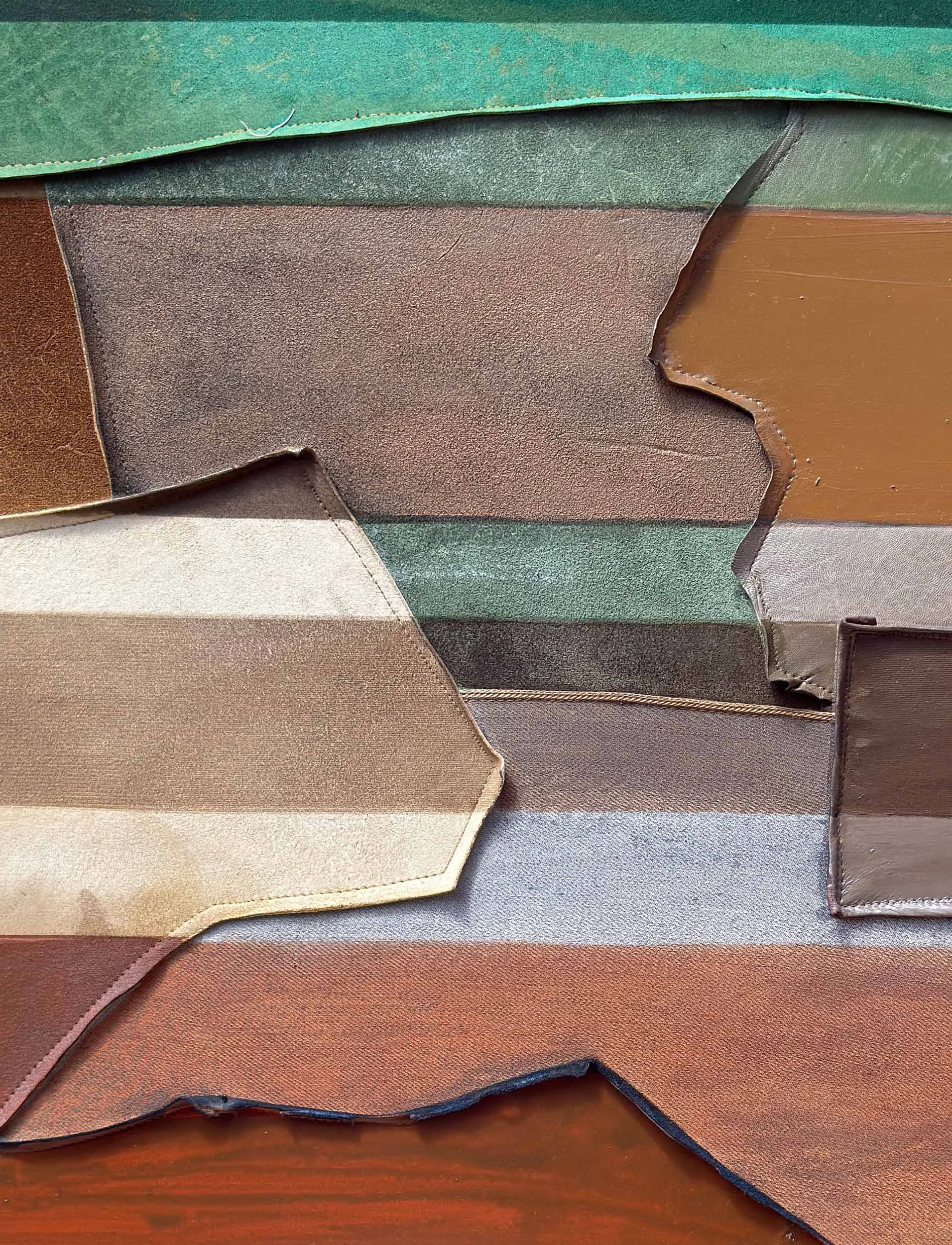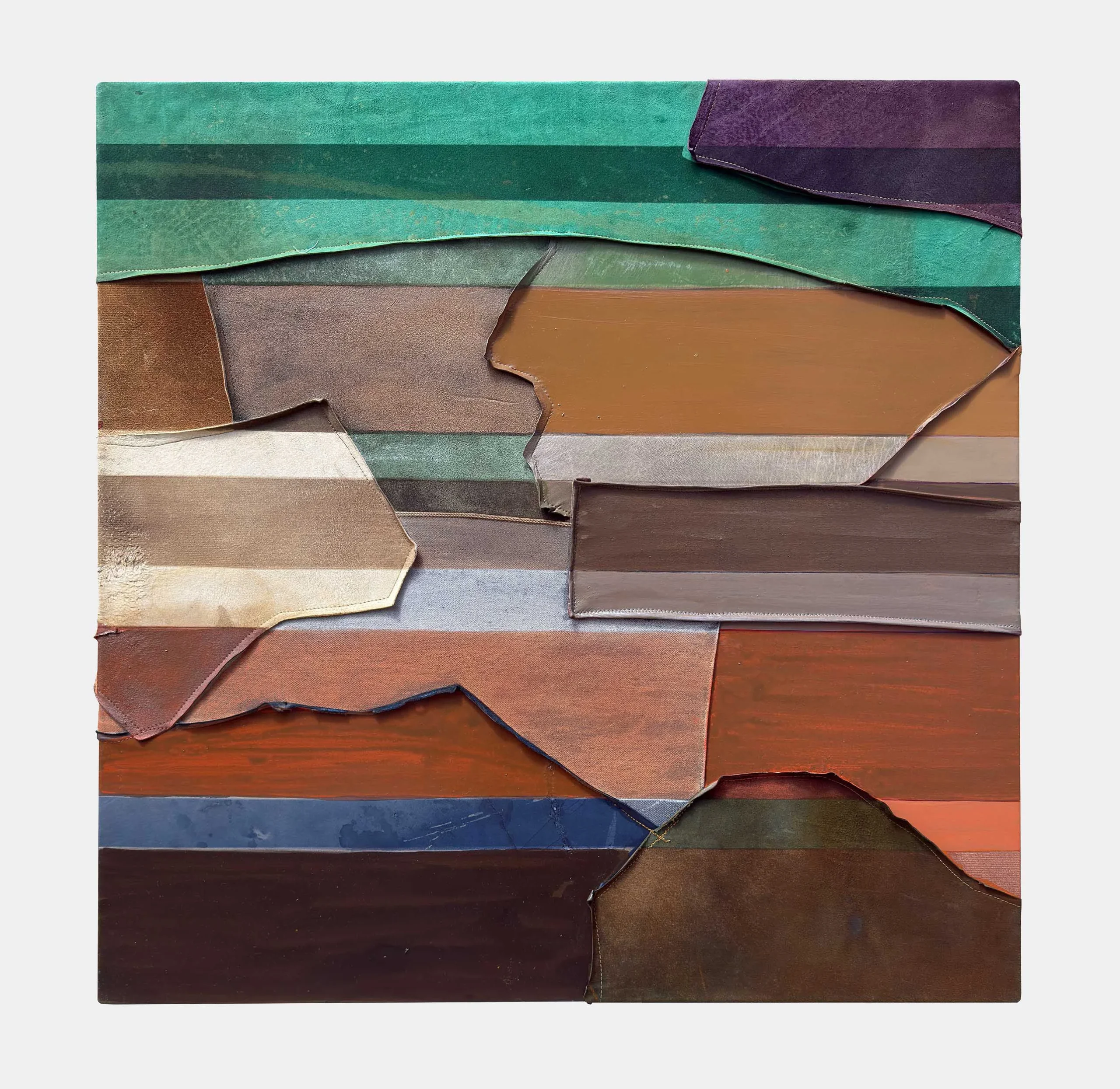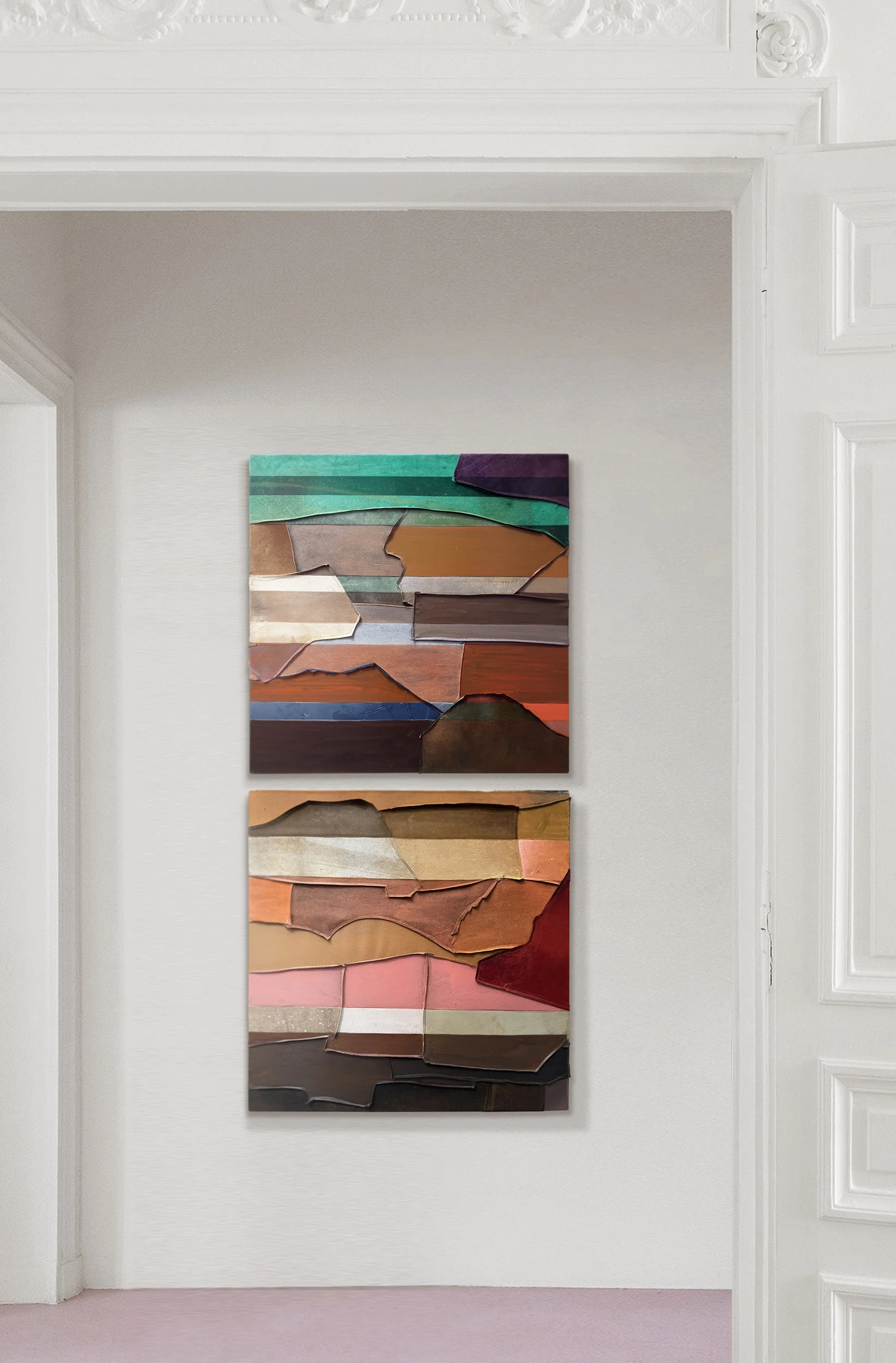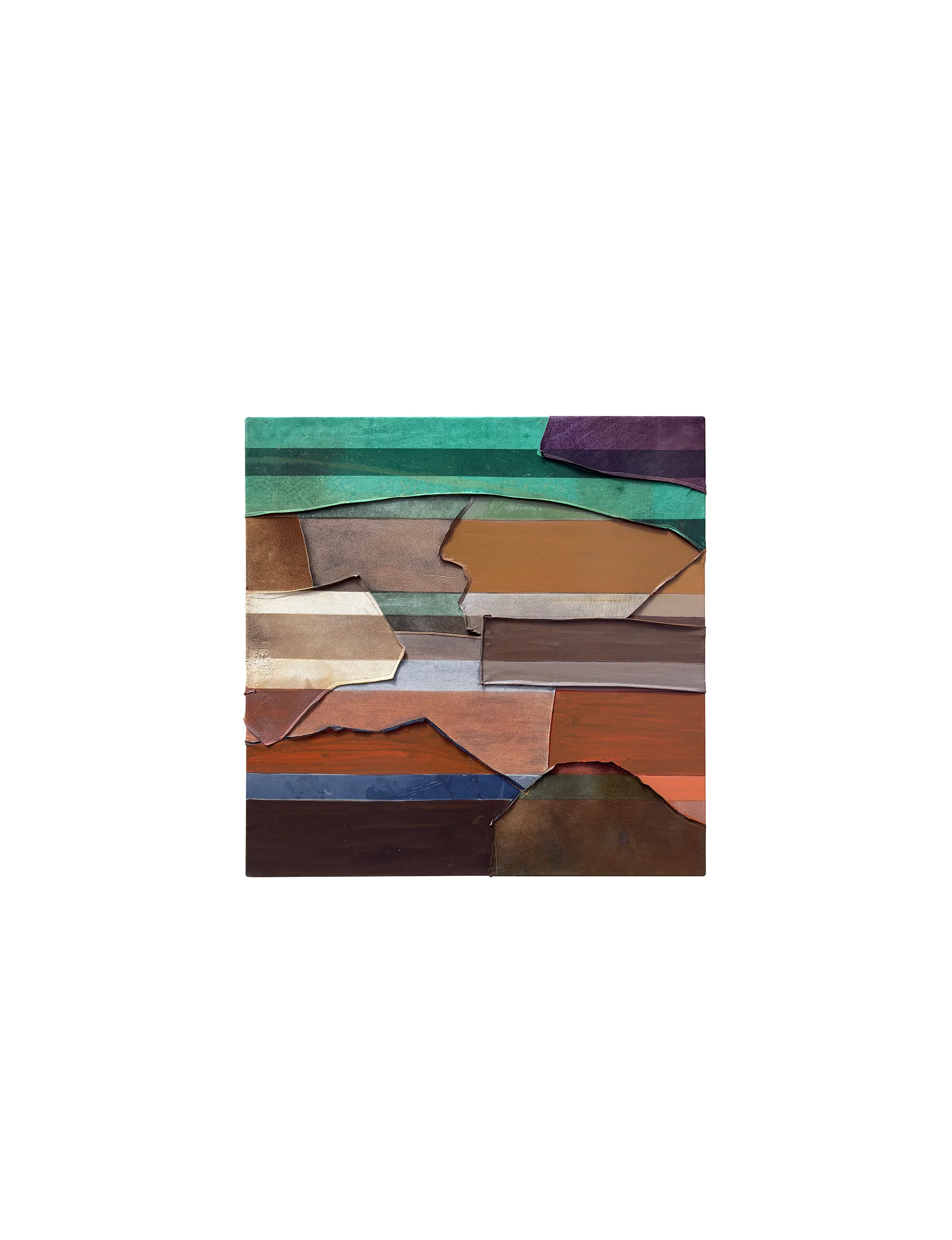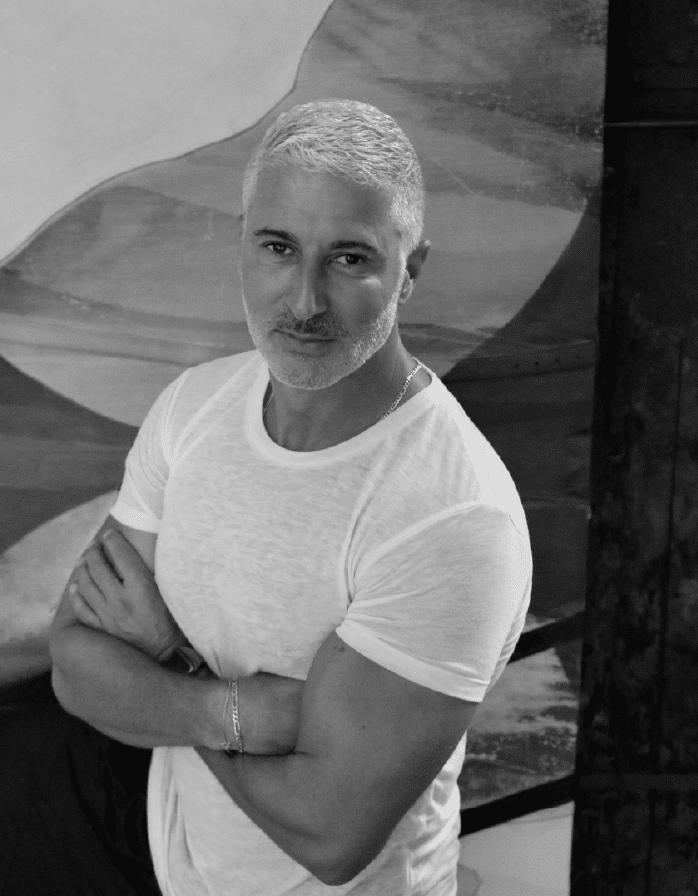BY RONEN AZULAY
UNIQUE WORK
PULSE COLLECTION
YEAR 2025
MIXED MEDIA ON REPURPOSED DENIM, TEXTILES AND RECYCLED LEATHER
| IN | H | 30 | W | 30 | ||||||
| CM | H | 76.2 | W | 76.2 |
HANDCRAFTED IN AMERICA
AVAILABLE
LOCATION NEW JERSEY, USA
BIOGRAPHY
DOWNLOAD PRODUCT INFO
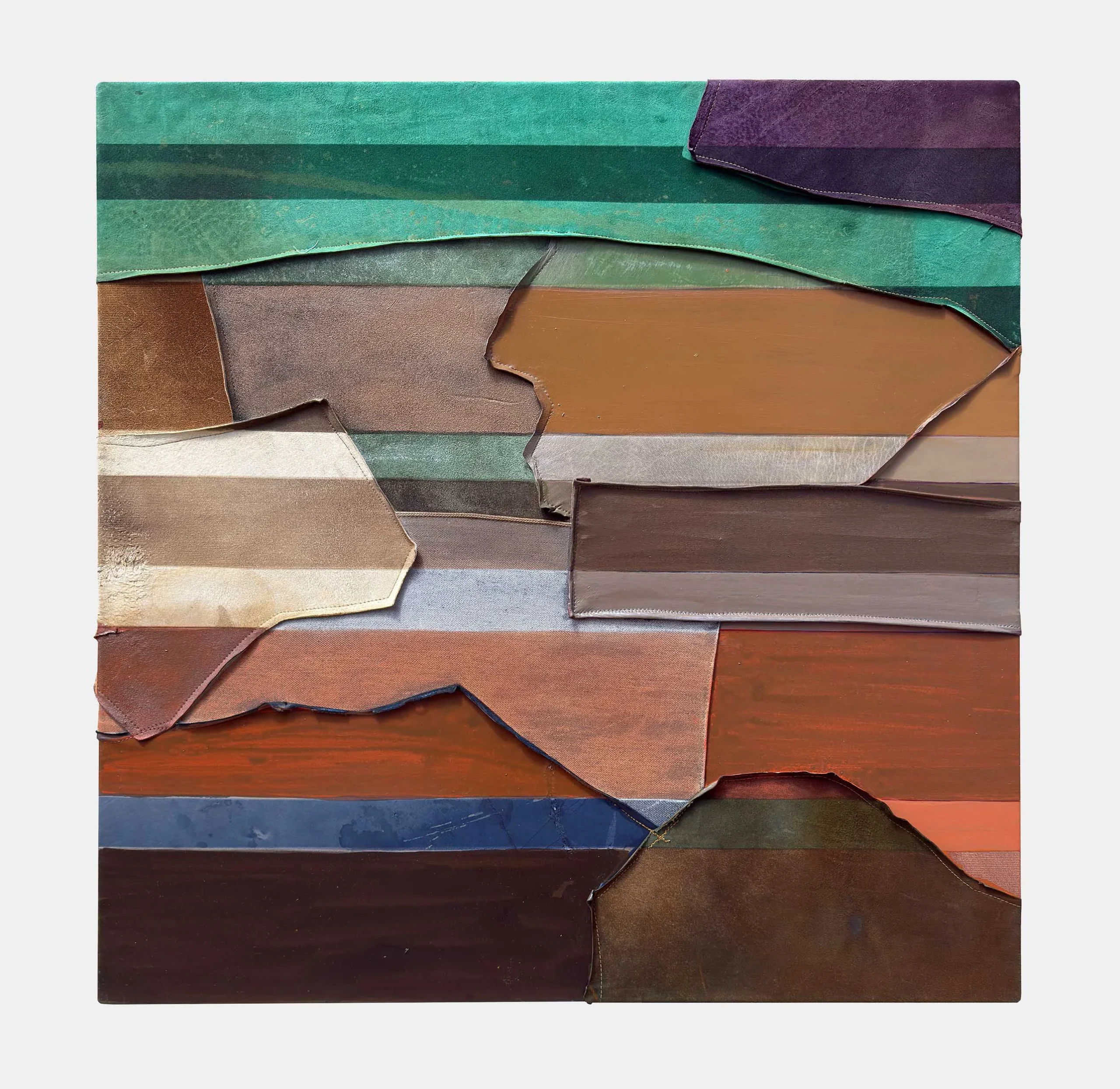
In Pulse, Azulay continues his tactile investigation into rhythm, presence, and internal awareness through a new visual lexicon. Departing from the circular motifs that have long characterized his practice, this series marks a formal and emotional shift toward linear structures that foreground organic, undulating intervals. This visual language that feels less enclosed, more open to interruption, improvisation, and directional flow. This evolution parallels the artist’s own trajectory from anxiety and constraint toward clarity, forward motion, and presence
Azulay’s materials—hand-cut textiles, repurposed leathers, and layered threads—are composed with a deliberate sensitivity to both repetition and variation. The surface of each work is constructed through a process of incremental assembly, where stripes appear not as decorative pattern but as registers of tempo, irregular yet precise. The resulting compositions suggest an embodied rhythm discovered and refined through the act of making
Despite their outward simplicity, the works in Pulse are charged with quiet complexity. The stripes vary in width, orientation, and density, generating subtle visual tensions that mirror the irregularities of lived experience. In this way, Azulay challenges the viewer to slow down—to move beyond the immediate graphic impact and engage with the layered nuances of material, rhythm, and repetition. Each work is an invitation to listen, to feel, and to resonate with the pulse that surrounds us all
A focused articulation of Azulay’s evolving formal and conceptual practice, Essence continues his shift toward linear structures, employing stripes as a means of reduction, of stripping form to its most elemental state. Constructed from repurposed leather, denim, and layered textiles, the work embodies a tactile austerity, revealing the raw integrity of both material and intent
Unlike earlier circular motifs that suggested enclosure or recurrence, the stripes in Essence extend outward with clarity and directness. Each line delineates a transition from repetition toward openness and structural simplicity. The physical layering underscores this conceptual excavation: what remains when gesture is pared back, when ornament is removed, when form seeks only what is essential?
